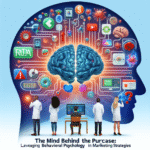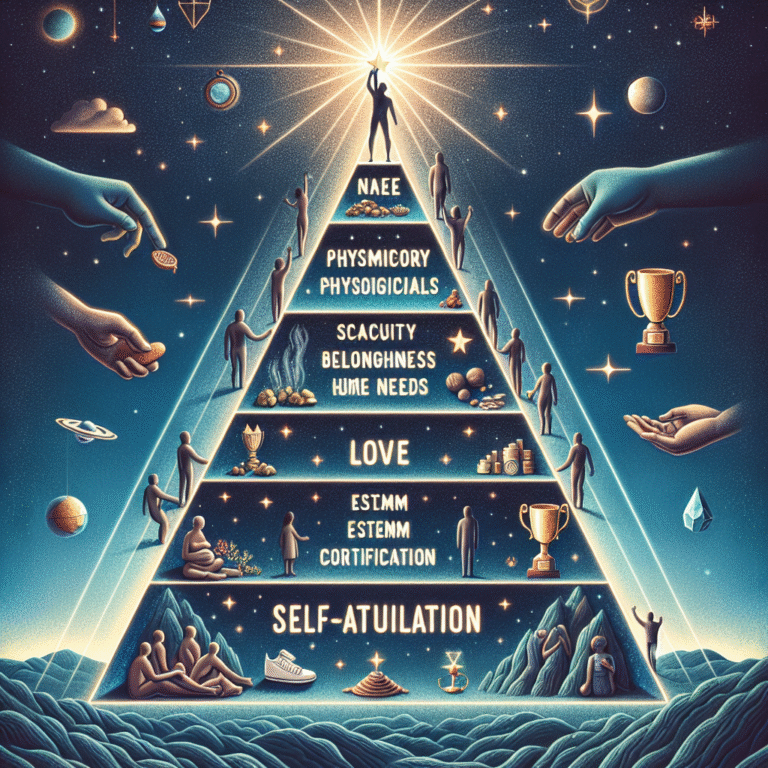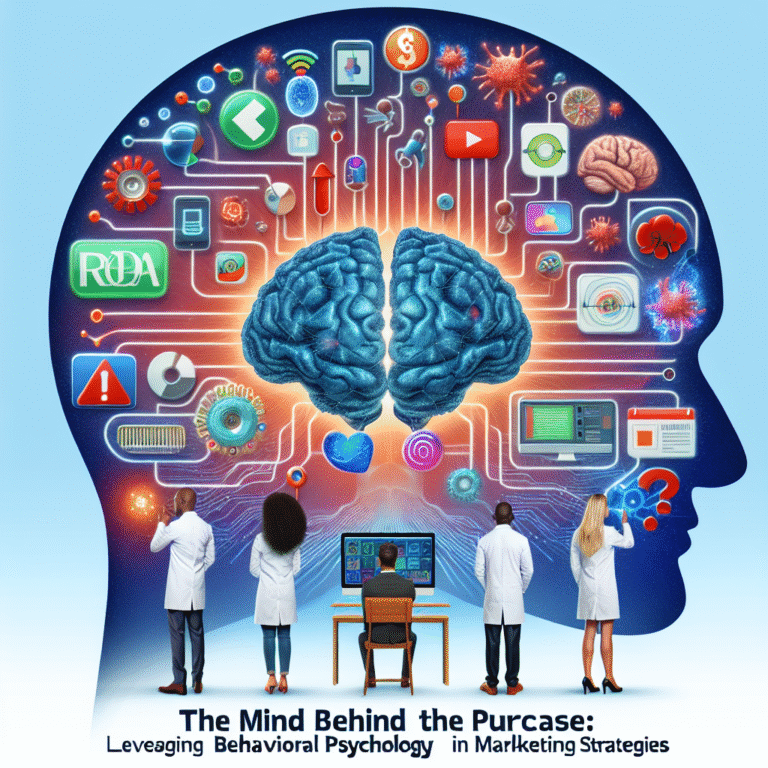
Understanding Love: How Attachment Theory Shapes Adult Relationships
Introduction
Love can often feel elusive, a complex tapestry woven from emotions, experiences, and connections with others. As we venture into the realm of adult relationships, the concept of love becomes multifaceted, shaped significantly by our early experiences and inherent attachment styles. Understanding Love: How Attachment Theory Shapes Adult Relationships reveals just how crucial these foundational experiences are. By exploring attachment theory—developed from the groundbreaking work of John Bowlby and Mary Ainsworth—we can better comprehend our relationship patterns, overcome challenges, and deepen our connections with others.
The Foundations of Attachment Theory
Attachment theory posits that our early interactions with caregivers shape our emotional landscape and influence our adult relationships. It identifies four main attachment styles: secure, anxious, avoidant, and disorganized. Each style carries distinct features and implications for adult relationships.
Secure Attachment
Individuals with a secure attachment style are typically able to form healthy, trusting relationships. They possess a positive view of themselves and others, leading to effective communication and emotional regulation. These individuals often report satisfaction in relationships and have a low incidence of mental health issues.
Case Study: Jenny and Mark
Jenny and Mark exemplify the secure attachment style. Both come from supportive backgrounds and communicate openly about their needs and emotions. Their relationship thrives on mutual respect and understanding, illustrating the positive dynamics fostered by secure attachment.
Relevance: This case demonstrates that a secure base allows partners to face challenges together, enhancing relationship satisfaction and longevity.
Anxious Attachment
Individuals with an anxious attachment style often crave closeness but fear abandonment. This leads to clinginess and emotional volatility, making relationships tumultuous. They may constantly seek reassurance and experience heightened emotional responses during conflicts.
Case Study: Laura and Tom
Laura’s anxious attachment style manifests in her relationship with Tom. Frequently needing validation, she often misinterprets Tom’s independence as a lack of interest, causing conflicts.
Relevance: This highlights how anxiously attached individuals may inadvertently create cycles of anxiety and insecurity, straining their relationships.
Avoidant Attachment
Avoidant individuals maintain emotional distance and often find it challenging to trust others. They prioritize independence and may struggle with intimacy, leading to difficulties in romantic relationships.
Case Study: Sam and Kelly
Sam’s avoidant attachment style is apparent in his relationship with Kelly. He often suppresses his emotions to maintain independence, leading to misunderstandings and unmet needs.
Relevance: This case emphasizes the struggle of avoidantly attached individuals to engage deeply in relationships, demonstrating how avoidance can impede emotional connection.
Disorganized Attachment
Disorganized attachment arises from inconsistent caregiving, resulting in behaviors that fluctuate between anxiety and avoidance. This leads to chaotic relationships filled with fear and confusion.
Case Study: Mike and Sarah
Mike and Sarah’s relationship is characterized by instability. Both have disorganized attachment styles, oscillating between seeking closeness and pushing each other away.
Relevance: Their struggles expose how past traumas can significantly interfere with the ability to form stable bonds, often leading to cycles of miscommunication.
The Role of Attachment Style in Adult Relationships
Understanding Love: How Attachment Theory Shapes Adult Relationships revolves around recognizing how these attachment styles play out in everyday life. Relationship dissatisfaction, recurrent conflicts, and emotional distress can often be traced back to these styles.
Building a Secure Relationship
To foster healthier relationships, individuals can work towards moving from insecure attachments (anxious or avoidant) to a more secure style. This transition involves self-awareness, communication, and, often, therapy.
-
Self-Reflection: Assess your attachment style and its impact on your relationships.
-
Open Communication: Cultivating honest discussions about needs and feelings improves emotional intimacy.
- Seek Professional Help: Therapy can be instrumental in adopting a secure attachment style, particularly for those with anxious or avoidant tendencies.
An In-Depth Look at Relationship Dynamics
Conflict Resolution
Understanding Love: How Attachment Theory Shapes Adult Relationships sharpens our comprehension of how attachment styles influence conflict resolution. Secure individuals are typically equipped to handle disputes calmly, while anxious individuals may escalate issues due to fear of abandonment.
Conversely, avoidant individuals may withdraw, leading to unresolved conflicts. Understanding these dynamics allows partners to approach conflict more constructively.
Emotional Regulation
Emotion regulation plays a vital role in how partners respond to each other. Securely attached individuals can express their feelings without fear, while anxiously attached individuals may struggle with emotional outbursts.
Table 1: Emotional Regulation by Attachment Style
| Attachment Style | Emotion Regulation | Relationship Impact |
|---|---|---|
| Secure | High | Open communication and empathy |
| Anxious | Low | Volatile emotions, heightened sensitivity |
| Avoidant | Low | Emotional distance, avoidance of conflict |
| Disorganized | Chaotic | Instability, unpredictable responses |
Case Study Analyses
-
Jenny and Mark: Their secure attachment fosters effective emotional regulation and conflict resolution.
-
Laura and Tom: Understanding Laura’s anxiety can foster empathy from Tom, helping him support her emotional needs.
-
Sam and Kelly: Encouraging Sam to open up helps bridge the emotional gap, fostering intimacy.
- Mike and Sarah: They could benefit from therapy to unpack their traumatic pasts and work towards stability.
The Impact of Parenting Styles on Adult Attachment
Parental approaches can greatly influence attachment styles. Secure, consistent parenting nurtures secure attachment, while neglectful or overly critical parenting may breed anxiety or avoidance.
Types of Parenting Styles
-
Authoritative: Balances responsiveness and demandingness, leading to secure attachment.
-
Authoritarian: High demand, low responsiveness. Often leads to anxious or avoidant attachment.
- Neglectful: Low demand, low responsiveness. Typically creates disorganized attachment.
By understanding the link between these parenting styles and adult attachment, we can illuminate the ways in which our upbringing shapes our adult relationships.
Transitioning Attachment Styles
It’s never too late to shift our attachment style. Understanding Love: How Attachment Theory Shapes Adult Relationships teaches us that awareness is the first step toward change. Here’s how individuals can transition toward secure attachments:
Practical Steps to Cultivate Secure Attachment
-
Engage in Self-Discovery: Journaling or reflecting on past relationships can illuminate attachment patterns.
-
Focus on Communication: Expressing needs and vulnerabilities can foster deeper emotional connections.
-
Establish Boundaries: Knowing when to enforce boundaries helps maintain emotional health.
-
Seek Support: Therapy or counseling can offer tailored strategies to address specific attachment challenges.
- Practice Mindfulness: Mindfulness can stabilize emotions, fostering more secure interactions.
Conclusion
Understanding Love: How Attachment Theory Shapes Adult Relationships offers profound insights into the mechanics of love and connection. By learning about our attachment styles and how they affect our relationships, we empower ourselves to foster healthier connections. It is never too late to cultivate a secure attachment style. Armed with the knowledge of attachment theory, individuals can break free from destructive patterns and forge deeply satisfying, loving relationships.
FAQs
1. What is attachment theory?
Attachment theory explains how early relationships with caregivers influence our emotional bonds in adult relationships.
2. How can I identify my attachment style?
Self-reflection, journaling, and conversations with trusted friends can help you understand your attachment behaviors.
3. Can attachment styles change over time?
Yes, awareness, therapy, and conscious efforts can facilitate changes towards more secure attachments.
4. How do I support my partner with an insecure attachment style?
Open communication, showing empathy, and encouraging them to express their feelings can help support their emotional needs.
5. Are certain attachment styles incompatible?
No attachment style is inherently incompatible, but understanding each other’s differences can help navigate challenges.
Understanding love through the lens of attachment theory not only deepens our comprehension of relationships but also equips us with the tools for healthier, more fulfilling connections. Embrace the journey of self-discovery and transformation—your most loving relationship awaits.
















